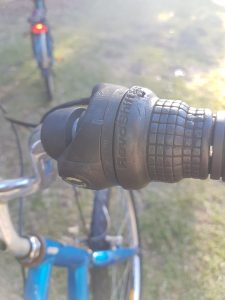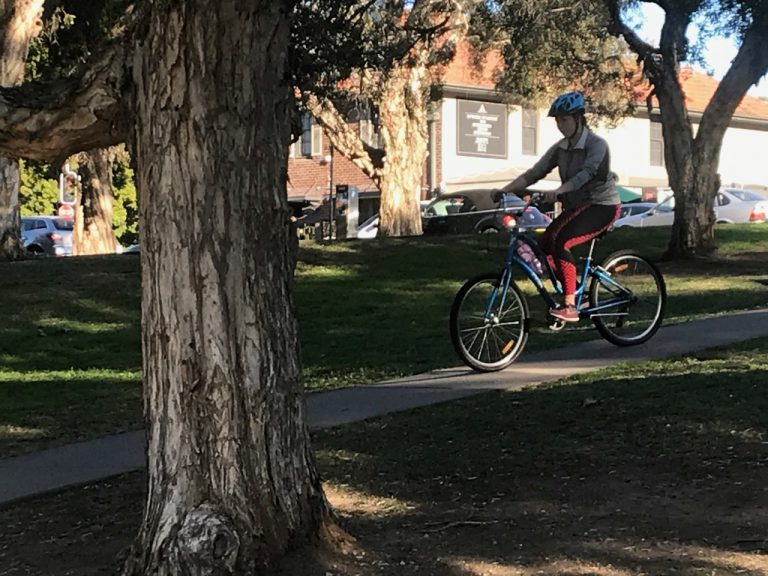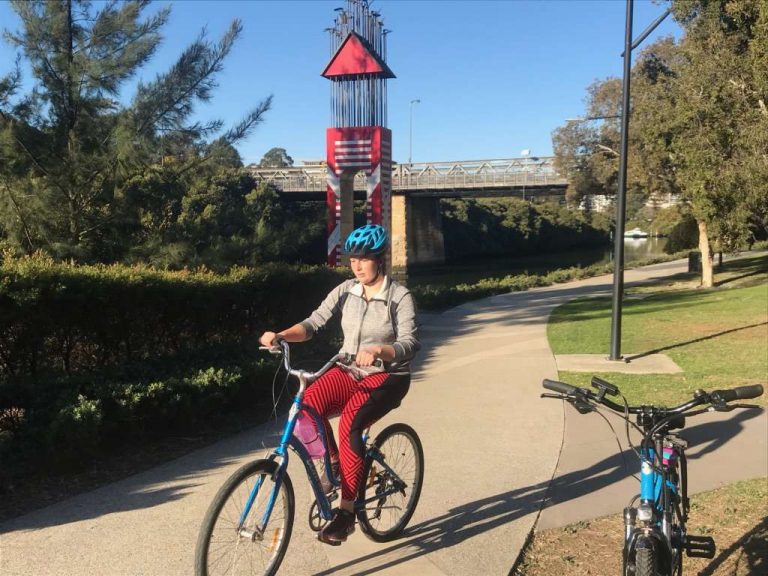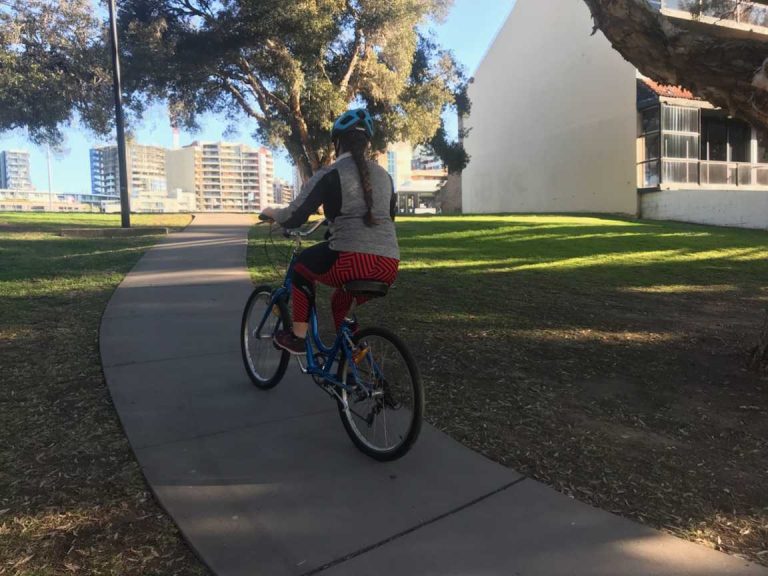Another week has gone by and I’m getting more comfortable on the bike. I made my first solo adventure riding on a shared path this week, which is exciting if not also a little scary!
I was practising my turning around the fountains and trees in Bicentennial Park and just thought I’d give the shared path a try. It was only a couple of hundred metres but it did involve a hill, some turns and the possibility of meeting pedestrians or other cyclists. Which is confronting as a beginner cyclist. I will admit your mind does often imagine it worse than what it is going to be. If you let yourself enjoy the ride at your own pace, your brain will react to hazards if they appear (if you have trained for them think back to braking and cornering in Week 1 & 2). Overthinking what could happen just tenses you up and makes it harder to ride. Cycling should be a fun experience not something that frightens you. If you are finding it difficult or worrying, go back to the easy stuff and make it fun again.
Meeting up with Charlene from Addvantageous on the Parramatta River for our weekly lesson, it was straight into riding this time. A few laps up and back on the shared path – a section of the Parramatta Valley Cycleway. Firstly, it was getting used to riding straight and being comfortable overtaking pedestrians.
When riding on shared paths or footpaths, the key is letting the pedestrians know you are there and being polite when you overtake them. Usually a simple ring of your bell or calling “overtaking on the right” works well.
Now it was time to learn about gears.
Most bikes will have a number of gears to make riding easier. When starting, you start on the lowest - gear 1 - to make it easier. As you pick up speed, the higher the gear should go. This is to make sure the rider is not putting in more energy into pedalling than is necessary, to stop free spinning and lose control of the bike.
When hills and corners start to come into play, this is when gears get more interesting. A simple rule is, when there is a hill you need to be in your lowest gear. This will mean as you make your way up on the hill, you will not struggle nearly as much.
For the bike I was riding, it had 7 gears at the back and 1 on the front. See the cogs at the back – that is how you can easily determine how many gears a bike has. In many situations, bikes will have more cogs on the back and more than 1 on the front. Then you need to be able to change gears on the back and front.



With this bike it was using the right handle bar and twisting the gear up or down to change it. Up to make the gear go higher and down for the gear to go lower.
As Charlene taught me – play around with the gears and see which one you feel comfortable in, going at different speeds. There are no rules about the amount of times you change your gear. As you are approaching a hill, drop down to 1 to make it easier on yourself.
As you are going down the hill, you can:
Option 1: Keep it in gear 1 and roll down the hill. Yet in this gear, you will likely be free spinning and not really be able to pedal out of the hill.
Option 2: Increase your gear on the way down. You can still roll down the hill but pedal out of it when you get to the bottom. This means you will have more control of the bike.
Gears are something you will need to play around with when riding. Basically, the higher the speed the higher the gear and vice versa.


More tips for hills:
- Riding up – leaning forward like you are helping the bike up the hill
- Riding down – arm straight pushing into the bike. Your bum should be on the back of your seat. Your legs should be at the same height on the pedals - one in front and one behind. This is to resist the forward momentum of going down the hill.
When watching other cyclists you will often see them get out of their seats in order to get up hills. There are benefits for both ways of riding. However, by standing on your pedals, you disconnect from the bike and can often lose control. Plus for everyone 1 minute standing, it takes 3 minutes to recover.
Once again, gears and hills comes down to practice. The more you do it the easier it will get. So get out on your bike and give it a try!
How is your bike riding progressing? Do you know of anyone that would like to start riding a bike? Feel free to share my journey with them. The more people on bikes the better!

This piece is not supposed to replace lessons with a qualified instructor. Bicycle NSW strongly advises to seek training from qualified rider leaders or instructors.
